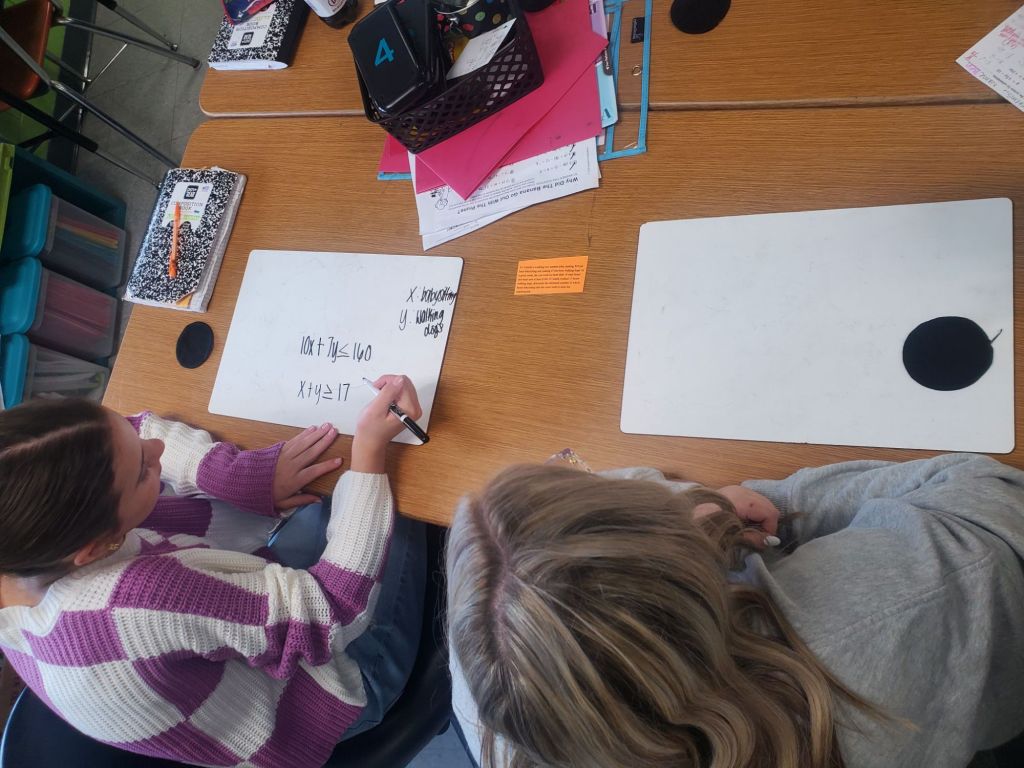We have been using the Student Engagement Wheel from David Sladkey in The Professional Educator course to reflect on strategies, structures, resources to engage learners.
Each week students reflect on activities and tasks in a determined class period. Then they take on the role of the teacher and write a SMART goal for planning a more engaging class the following week. Listening to their ideas is super motivational for me. It makes me want to do better, too!
We received Kagan training before school started, so our department has challenged itself to implement and try new strategies then share at weekly PLCs.
I chose Sage & Scribe these past 2 weeks. One marker per pair of students. One shares their thinking verbally and the other writes out the problem. They switch roles for each new problem.
Students said they liked the structure because it forced them to talk through their thinking process; it gave them someone immediate to help if they were stuck. It also allowed them to see/hear someone else’s thinking to build their own understanding and confidence.
One question, what do we do if we’re the scribe and they are telling us something we know is wrong? What do we do? Ideas? We can’t just tell them-because we see that as stealing their opportunity (my attempt to create a norm to coach- help, not tell) – so how might we ask a question, tell me why you chose to…, can we reread the problem for that part again?

I created a set of 20 problems from Deltamath, printed and also the answer keys. I reduced the size of the answer key to 75%, used a gluestick to attach to back of question, then laminated.


Tables are set up with groups of 4, so each table got 2 cards. I quickly realized this was causing some groups to have to wait on others who took a little more time. So decided to put 3 or 4 cards at each table, so a pair who finished a little more quickly could continue and the other pair did not feel rushed.
Every 3-4 minutes, we passed each set of cards on to a new table, rotating the questions around the room.
I walked around and listened. This was great practice to solidify a skill students were not as confident in. The skill was to define variables and write inequalities system to model constraints.
I know now, since I have 8 tables, to create at least a 32 problem deck which allow enough for 4 problems per table. Also, I am attempting to create cards 2.5 x 4″ size so they will fit into plastic gum containers.


What are some of your wins / opportunities to adjust using Sage & Scribe from Kagan?